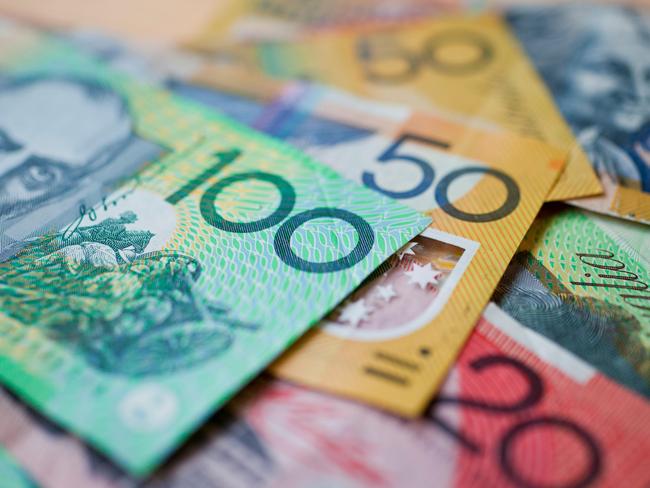Energy debts: Power companies answer hard questions over Victoria’s rocketing power bills
VICTORIAN families are being plunged into financial nightmares as they grapple with utility debts. The Sunday Herald Sun asked power companies the hard questions — here’s what they had to say.
VIC News
Don't miss out on the headlines from VIC News. Followed categories will be added to My News.
- Power bill debts rocket up to $18k
- Victorian families in power bill panic
- Dim view? Fight back against high energy bills
- Smart meters fail to cut power bills
VICTORIAN families are being plunged into financial nightmares as they grapple with utility debts.
A Sunday Herald Sun investigation into Victoria’s three largest energy retailers, AGL, Origin and Energy Australia reported the shutting down of Hazelwood power station had driven prices up.
The Sunday Herald Sun asked power companies the hard questions — here’s what they had to say.
ORIGIN ENERGY
Q: In the past year, how much have prices risen, in percentage and dollar terms, for an average Victorian household for electricity and gas?
A: Origin last increased its Victorian retail prices on 1 January 2017, as follows: Electricity 6.5% or $94 a year (ex. GST), as 7.8% or $89 a year (ex. GST). Note that several other retailers also increased prices on 1 July 2017, while Origin did not.
Q: Why are electricity and gas prices rising so much?
A: The retirement of power stations in the National Electricity Market has led to higher prices for the energy we purchase on our customers’ behalf.
Q: What percentage of your Victorian customers are on electricity standing offers and gas standing offers?
A: The Essential Services Commission and Australian Energy Market Commission report that Victoria has about 10 per cent of customers on standing offers.
Q: What are you doing to help customers get on to the cheapest deals?
A: Origin actively promotes our market offers through paid advertising and online. We also write to customers before their benefits expire to invite them to take up a new offer.
We will also extend letters to our standing offer customers, but rather than wait by the letterbox, we’re encouraging customers to online or call us and we’ll make sure they’re on a great deal.
Q: How many of your Victorian electricity customers and gas customers are on hardship programs?
A: 12,520

ENERGY AUSTRALIA
Q: In the past year, how much have prices risen, in percentage and dollar terms, for an average Victorian household for electricity and gas?
A: From 1 January 2017, the cost of electricity for the average EnergyAustralia household (one using 4.7MW/h of electricity and on a market contract) rose by 8.3% to $1663 annually; the increase equates to around $10.80 a month or $127 a year. Residential gas bills for the average EnergyAustralia customer in 2017 rose by 6.1%, or around $70 a year.
Q: Why are electricity and gas prices rising so much?
A: The increase reflected higher generation, general business and government green-scheme costs. More than half the increase in average household electricity bills was due to higher wholesale costs (the electricity we buy on behalf of customers) following the closure of large coal-fired power station Northern in South Australia and the market’s reaction to the closure of Hazelwood.
Increased demand for gas by liquefied natural gas projects in Queensland and reliability issues with some big generators also contributed to the increase.
Overall, in 2016 the average spot price of wholesale electricity increased by 40 per cent compared to the prior year.
The report by the independent Review into Electricity Gas Retail Markets in Victoria showed the recent rise in wholesale costs followed a doubling of network and metering costs since 2009.
Q: What percentage of your Victorian customers are on electricity standing offers and gas standing offers?
A: Less than 8 per cent of our Victorian residential and small to medium business customers are on standing-offer tariffs.
To be clear, EnergyAustralia does not move customers onto standing offer tariffs at the end of their benefit period.
Q: What are you doing to help customers get on to the cheapest deals?
A: This week we launched a new interactive gas and electricity electronic bill to make it easier for families and businesses to manage their accounts and understand exactly how much they’re paying for energy. Customers can now set the due date as a calendar reminder so they don’t risk missing out on any pay-on-time discounts or benefits.
Since January we’ve sent our customers — via electronic and regular mail — more than 4 million pieces of marketing communications, with new offers and propositions that reward loyalty such as our carbon neutral program and Velocity frequent flyer program.
We provide clear descriptions on our website of our electricity and gas plans, including estimates of how much they’ll cost — in dollars — each month, so customers can find the best deal for them.
We don’t change customers’ discounts or benefits without informing them first. In fact, it’s our standard practice that when a customer reaches the end of their benefit term they continue to receive the same discount.
We’re investing an additional $10 million in financial and other support for some of our most vulnerable customers. And when these customers join the program our approach is to review their existing plan and make the appropriate changes to ensure they’re receiving our best in-market offer and any government concessions to which they’re entitled.
We’re committing billions of dollars to our existing generation assets and new energy investments, to keep the system reliable and bring on more supplies so wholesale energy prices come down.
We have exempted our hardship and concession customers from paper bill fees, we also don’t pass-on additional fees when they settle their accounts via credit card.
And as we do that we’re campaigning for a stable, national approach to energy policy because that’s our last — and best — opportunity to bring prices down.
Q: How many of your Victorian electricity customers and gas customers are on hardship programs?
A: EnergyAustralia has had a hardship program since 2005. Right now, we have around 5,390 Victorian customers participating.
The aim of the program is to help our most vulnerable customers become financially independent.
When a customer joins the program, and providing they agree, our approach is to review their existing plan and make the appropriate changes to ensure they’re receiving our best in-market offer and any government concessions to which they’re entitled.
We can also work out a payment plan based on what the customer can afford, because at this stage commitment to the program is more important than capacity to pay. Other measures we might talk about with the customer include payment matching, debt waiving, home energy audits and appliance swaps.
Recently we announced an additional investment in hardship of $10 million. We’ve begun consulting with government, financial counsellors and community groups on how best to apply the additional funds, with an emphasis on energy efficiency and measures that provide lasting, long-term relief.

AGL
Q: In the past year, how much have prices risen, in percentage and dollar terms, for an average Victorian household for electricity and gas?
A: Electricity and gas prices for our Victorian customers increased from 1 January this year.
The average increase across our residential electricity customers in Victoria was estimated at $2.59 per week (including GST). The increase experienced by each individual customer may have been substantially different and would have been dependent on tariff type, their usage, the area they live in and their existing energy plan.
The average increase across our residential gas customers in Victoria was estimated at $1.86 per week (including GST). The increase experienced by each individual customer may have been substantially different and would have been dependent on their usage, the area they live in and their existing energy plan.
Q: Why are electricity and gas prices rising so much?
A: Retail electricity prices have risen recently because of significant increases in wholesale market prices. Wholesale prices have increased for a number of reasons, including high gas prices and limited gas availability on the East Coast, the closure of ageing coal-fired generators, and an uncertain policy environment.
Q: What percentage of your Victorian customers are on electricity standing offers and gas standing offers?
A: Only about 10 per cent of our Victorian customers are on standing offers.
Q: What are you doing to help customers get on to the cheapest deals?
A: We are taking action to help customers access competitive energy deals, particularly vulnerable customers, such as through the automatic discount we provide to Victorian concession customers on electricity standing offers.
We also provide customers on our Staying Connected hardship program with highly competitive offers, guaranteed discounts and personalised support to get them back on track.
We have also introduced AGL Everyday, a product that provides a discount off usage and supply charges that is not conditional on paying on time, which is especially suited to people with lower energy use.
We contact residential customers with a new offer before their energy plans are due to end, or automatically extend their energy plan for a further term, but we do not transfer them to basic ‘standing offers’.
We have previously called for a standardised industry-wide solution to help customers easily compare plans and are committed to working with industry, regulators and consumer groups to have this in place.
Q. How many of your Victorian electricity customers and gas customers are on hardship programs?
The national total of customers in our Staying Connected hardship program in the 2017 financial year was 31,463.


